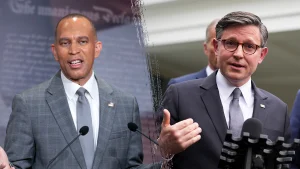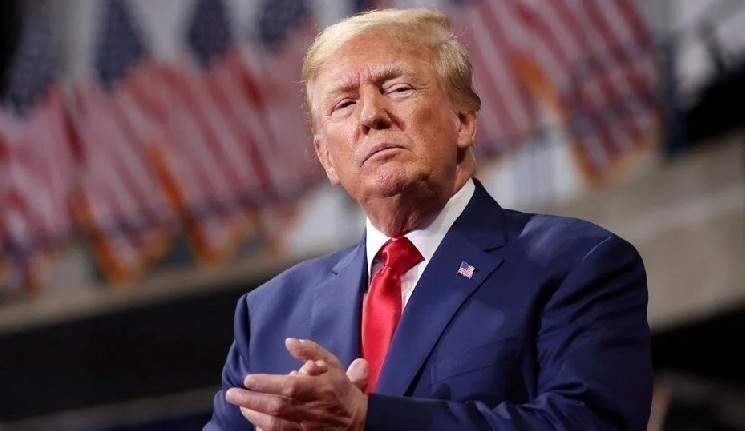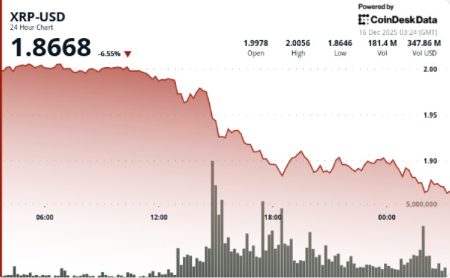Trump Signals Openness to China Trade Resolution Despite Tariff Threats
U.S. President Acknowledges “Unsustainable” Nature of High Tariffs as Critical Meeting with Xi Jinping Approaches
In a significant shift of tone amid escalating U.S.-China trade tensions, President Donald Trump has characterized his threatened high tariffs against China as “unsustainable,” suggesting a potential pathway toward resolution between the world’s two largest economies. The statements come at a critical juncture as preparations continue for an anticipated face-to-face meeting between Trump and Chinese President Xi Jinping, which could determine the trajectory of global trade relations in the coming years.
Speaking candidly during an extensive interview with Fox Business, Trump offered a more nuanced perspective on his administration’s aggressive trade stance, acknowledging the potential long-term economic consequences of his proposed tariff increases. “This is unsustainable,” the President admitted, while maintaining that Chinese actions had forced his hand. “This rate could probably have been stopped, but they forced me to do it.” The admission represents a rare acknowledgment from Trump about the potential domestic economic fallout from his hardline trade policies, which have been a cornerstone of his approach to China throughout both his administrations.
Diplomatic Overtures Signal Potential for De-escalation as November Deadline Approaches
Despite the tough rhetoric that has characterized recent exchanges, both President Trump and Treasury Secretary Scott Bessent have projected optimism that ongoing discussions with Chinese officials could yield a comprehensive agreement to ease the mounting trade tensions. This positive messaging comes against the backdrop of serious concerns in global markets about Trump’s threats to raise import tariffs on Chinese products to as high as 145% – a move that would significantly disrupt international trade patterns and supply chains worldwide. “We’re doing very well with China. Talks are progressing,” Trump stated during a White House event, expressing confidence that his planned meeting with President Xi would move forward as anticipated.
The optimistic signals represent a marked shift from just last week, when Trump announced he might impose an additional 100% tariff on Chinese goods by November 1st and suggested he was considering canceling the expected summit with Xi. That escalation came in direct response to China’s new restrictions on rare earth exports – critical materials used in everything from smartphones to military equipment. With the 90-day temporary ceasefire between Washington and Beijing set to expire on November 10th, the stakes for successful diplomatic engagement have never been higher. The trade relationship has grown increasingly complex as Washington’s expansion of technology restrictions and proposed new tariffs on Chinese ships have prompted Beijing to accelerate plans for tighter controls on strategic exports.
Trump Expresses Confidence in Meeting with Xi as Diplomatic Channels Remain Open
Despite the series of tit-for-tat measures that have characterized recent U.S.-China relations, President Trump has maintained that the upcoming high-level meeting could produce meaningful results toward establishing a lasting trade peace. When asked directly if the meeting would proceed as planned, Trump responded affirmatively: “I think so. The meeting is proceeding as planned. They want to meet, and so do we.” This public commitment to dialogue represents an important signal that diplomatic channels remain open despite the heated rhetoric and policy actions from both sides in recent weeks.
The importance of maintaining high-level communication was further emphasized by Treasury Secretary Scott Bessent, who announced plans to meet with Chinese Vice Premier He Lifeng in Malaysia next week – a critical preliminary discussion that could set the stage for the presidential summit. “Tensions have eased,” Bessent noted in his statement, adding, “We hope China will show the same respect we’ve shown to us. I’m confident that President Trump, through his relationship with Xi, will move the process in the right direction.” This scheduled high-level economic dialogue represents an important step toward rebuilding trust between the economic teams on both sides, potentially laying groundwork for more substantial agreements at the presidential level.
Global Markets Watch Closely as Strategic Competition and Economic Interdependence Collide
The ongoing trade tensions between the United States and China extend far beyond simple economic competition, reflecting deeper strategic rivalries that have intensified in recent years. Beijing’s decision to impose new restrictions on rare earth exports – materials in which China holds a near-monopoly position globally – demonstrates how economic tools are increasingly being deployed as instruments of geopolitical leverage. These minerals, essential for advanced technology manufacturing, represent just one aspect of the complex interdependence that characterizes the U.S.-China economic relationship.
The potential consequences of further escalation have global financial markets on edge, with investors closely monitoring every statement and signal from both Washington and Beijing. A 145% tariff on Chinese imports would represent an unprecedented level of economic restriction in modern trade relations, likely triggering substantial inflation pressures in the U.S. while significantly disrupting global supply chains that have become deeply integrated over decades. Trump’s acknowledgment of these tariffs as “unsustainable” suggests a recognition of these economic realities, potentially opening space for a negotiated solution that addresses U.S. concerns about market access, intellectual property protection, and industrial policy while avoiding the most damaging economic consequences of an all-out trade war.
Pathway Forward Requires Balancing Firm Stance with Pragmatic Engagement
As the November deadlines approach, both nations face the challenge of balancing domestic political imperatives with the economic necessity of finding a workable compromise. For the Trump administration, maintaining a tough stance on China aligns with campaign promises to address what many Americans perceive as unfair trade practices. However, the “unsustainable” nature of extreme tariffs that Trump himself acknowledged creates practical limitations on how far such policies can be pushed before harming U.S. economic interests.
For China, the mounting pressure comes at a time when its economy faces significant headwinds, including a property sector crisis and slowing growth. While Beijing has demonstrated willingness to absorb economic pain to maintain its strategic autonomy, a prolonged trade conflict with its largest export market presents serious challenges to economic stability. The scheduled preliminary meeting between Treasury Secretary Bessent and Vice Premier He Lifeng therefore represents a crucial opportunity to establish parameters for a potential agreement that would allow both sides to claim victory while stepping back from the brink of a full-scale economic confrontation. As President Trump emphasized, both sides “want to meet” – perhaps the clearest indication that despite the confrontational rhetoric, a path toward resolution remains possible through continued high-level dialogue and pragmatic engagement.















